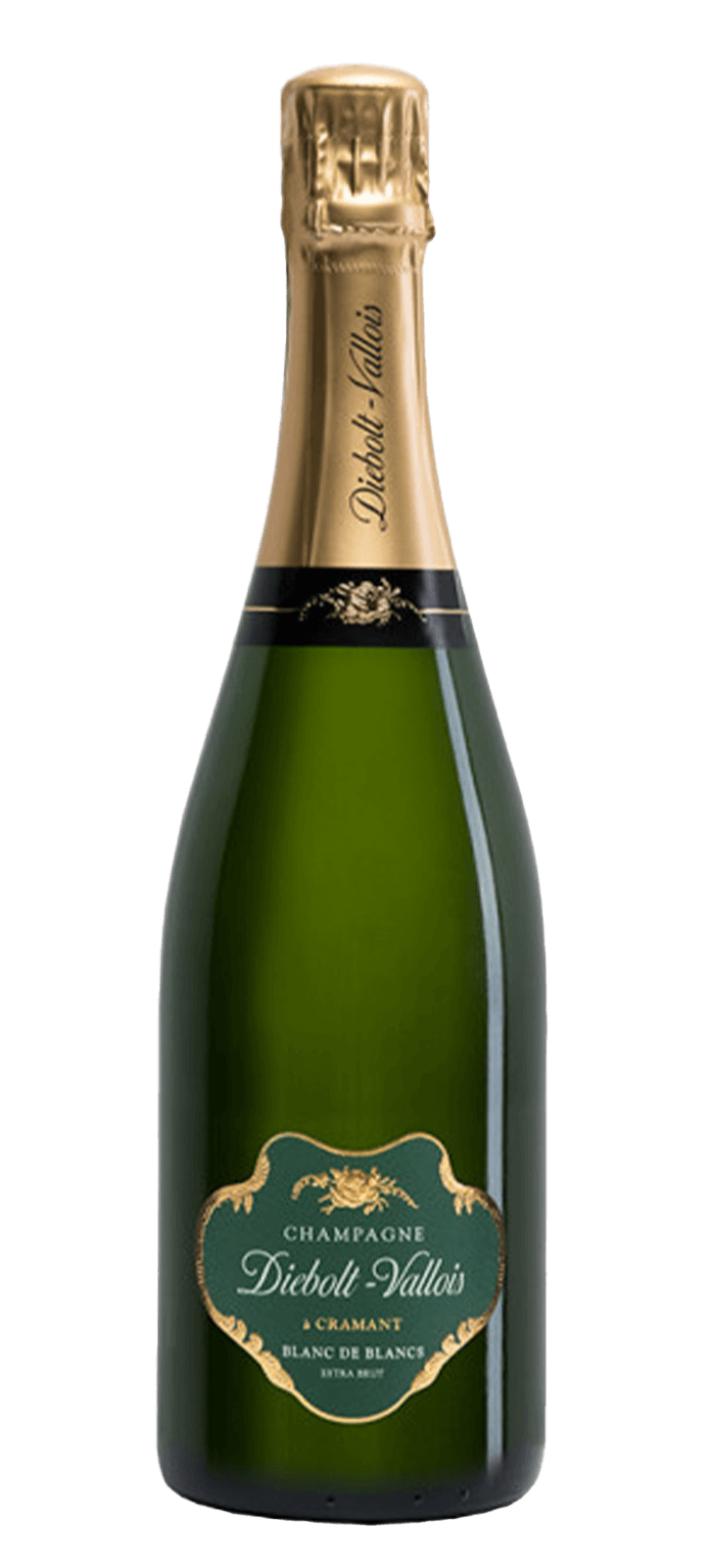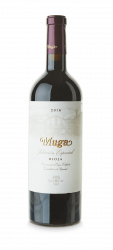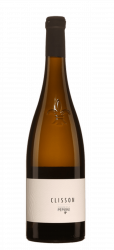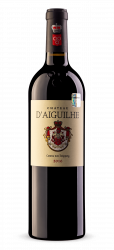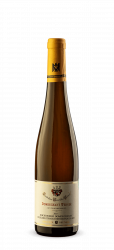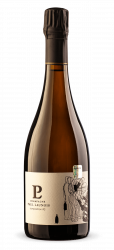Brut Blanc de Blancs Magnum
A Blanc de Blanc champagne made with the Traditional method
Fermentation happens in thermostatically controlled vats usually blending vines from 2 different years, wines used the terroirs from Cuis, Chouilly, Epernay and young vines from Cramant. Their grapes bring minerality and delicacy with good acidity which must of course be allowed to mellow. The vines from the Epernay slopes give wines that are balanced, round and fat – generally attractive. After staying around 2 years on the lees they add a dosage of 3-5 g/l.
The final wine is brisk and pure but creamy, with incisive apple and citrus flavors and great finesse. Very light on its feet and perfumed in the mouth. Finishes floral, gripping and very long
The champagne house Diebolt-Vallois can be found in Cramant, a village in the "Côte des Blancs" - it`s chalky soil makes the perfect home for Chardonnay vines. It is certainly one of the finest terroirs in the Champagne region and the realm of "blanc de blancs" champagnes.
In 1978 the estate underwent a sea-change with the extension of the estate and the construction of all the cellars and the winery. The Diebolt-Vallois champagne vineyards cover 11 hectares the great majority of which are in Cramant and Cuis, two villages that are classed as Grand Cru and Premier Cru respectively. All of these are planted entirely with Chardonnay. Some vines on the Montagne de Reims and the Côte de Bar complete the estate's holdings, and these are planted with Pinot Noir and Pinot Meunier.
Vineyards are on The East-South-East facing slopes suit the Chardonnay particularly well, and it gives the champagne power and rich texture. The grapes are hand picked and each plot is picked separately and vinified apart. The harvest is either pressed in a traditional vertical press or pneumatically. Only the "cuvees" - the juice from the first pressing - are kept for all the blanc de blancs. Depending on the wine, fermentation is either carried out in thermostatically controlled vats or in wooden barrels. Malolactic fermentation takes place in all the wines except Fleur de Passion which is the prestige cuvee of the house.
Fresh chardonnay shows bright fruity profile and strong body. Chardonnay wines usually have expressed aromatic complexity and usually it happens due to winemaking techniques (particularly the use of oak promote notes of vanilla, smoke and hints of spices) rather than the variety's intrinsic qualities. Also, this variety can develop cream, yeast and brioche bread notes. Because of this high level of winemaker influence, Chardonnay has become famous as the "winemaker's wine".
The Champagne region combines specific climate, soil and topography conditions that form a unique terroir which is currently used by approx. 15 000 vine-growers and 300 wine houses.
The region consists of 4 sub-regions - Montagne de Reims, Côte des Blancs, Vallée de la Marne and Côte des Bar. Each provides customers with a different style of sparkling wine. The dominant grapes are Pinot Noir and Pinot Meunier that are mainly used in Montagne de Reims and Vallée de la Marne, while Chardonnay shows excellent results in Côte des Blancs.
The region is even more appealing because of the so called "Growe's Champagne" wines, the production of which is overseen by one family from start to finish - they grow and press grapes, make wine and bottle it in the territory of one wine house. This gives the wine a true charm, aura and unique flavour.
The champagne house Diebolt-Vallois can be found in Cramant, a village in the “Côte des Blancs” – it`s chalky soil makes the perfect home for Chardonnay vines. It is certainly one of the finest terroirs in the Champagne region and the realm of “blanc de blancs” champagnes. In 1978 the estate underwent a sea-change with the extension of the estate and the construction of all the cellars and the winery. The Diebolt-Vallois champagne vineyards cover 11 hectares the great majority of which are in Cramant and Cuis, two villages that are classed as Grand Cru and Premier Cru respectively. All of these are planted entirely with Chardonnay. Some vines on the Montagne de Reims and the Côte de Bar complete the estate’s holdings, and these are planted with Pinot Noir and Pinot Meunier. Vineyards are on The East-South-East facing slopes suit the Chardonnay particularly well, and it gives the champagne power and rich texture. The grapes are hand picked and each plot is picked separately and vinified apart. The harvest is either pressed in a traditional vertical press or pneumatically. Only the “cuvees” – the juice from the first pressing – are kept for all the blanc de blancs. Depending on the wine, fermentation is either carried out in thermostatically controlled vats or in wooden barrels. Malolactic fermentation takes place in all the wines except Fleur de Passion which is the prestige cuvee of the house.


